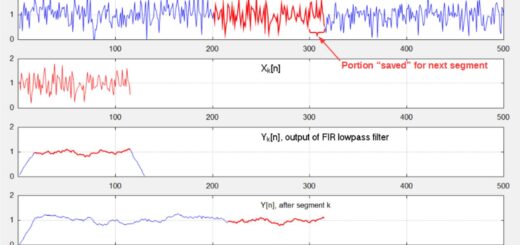SQL for Data Science Beginners Guide
SQL for Data Science Beginners Guide, SQL, or Structured Query Language, can be used by data science professionals to retrieve, manipulate and store data to analyze it later on in order to make better business decisions and predictions about the future.
This guide will help you get started with SQL in your own data science projects. We’ll go over the different types of clauses used in SQL, as well as more complex topics like subqueries and views so that you can quickly move from beginner to expert status in no time at all!.
Transition plot in R-change in time visualization » finnstats
What is SQL?
SQL, or Structured Query Language, is a language designed to manipulate and read data from relational databases. SQL plays an integral role in data science because it’s at the core of accessing and cleaning your data.
Before you can use Python or R to do some cool statistical analysis on your data, you’ll need to take care of pulling all that data together in one place and preparing it for analysis. That’s where SQL comes in.
This quick guide will get you started with SQL and teach you how to create queries that retrieve useful information from your database.
What is statistical data? Functions, Methods, and Types » finnstats
Basics of SQL
SQL is a standard programming language that enables data scientists to easily access and manipulate datasets.
Like any language, SQL has a number of keywords these are known as reserved words and include select, from, where, and so on.
By using SQL, data science professionals can ask questions about large sets of data much more quickly than they could by hand.
And while it takes some practice to master, SQL is actually relatively easy to learn compared with other languages like Python or R; its syntax is more similar to English than other languages.
Here’s what you need to know
What can I do with SQL?
SQL, or Structured Query Language, is a programming language used to retrieve and manipulate data in a database.
It’s one of several technologies that may be used to query and analyze data; others include SQL’s modern offshoot, called NoSQL (Not Only SQL), and specialized database languages like Teradata.
While it can be used for more than simply analyzing data, SQL has a reputation as an analytical tool. For that reason, we’ll focus on using it primarily as such in our discussion below.
McNemar’s test in R » finnstats
How to get started?
This guide will attempt to show how to get started with SQL data science. First, we’ll go over basic concepts and setup then move on to creating your first program.
You might have heard about R for data science or other tools and want to try them out but never seem to find enough time.
Or maybe you have used one of these tools but aren’t sure where else to look for answers when questions arise beyond their documentation.
SharePoint R integration and analysis » Automation » finnstats
Reading Tabular Data
Making Sense of Spreadsheets and Relational Databases: It’s one thing to be able to read a spreadsheet; it’s another thing entirely to know how to parse through tables of data and pull out what you need, where you need it.
When working with relational databases, whether SQL or NoSQL, you need some level of expertise in table design and schema management in order to make sense of your data, which is typically represented as rows and columns.
This is where NoSQL shines: there are no constraints on data format, other than that it all fits into JSON. At its core, JSON is a highly readable data structure comprised of key-value pairs.
Descriptive Statistics
SQL for data science can be split into descriptive statistics, which tell you about a population or sample, and inferential statistics, which make predictions about populations.
Descriptive statistics include measures of central tendency such as mean, median, and mode (or sometimes other summary stats such as percentiles). We’ll cover these in-depth in later tutorials.
The main SQL commands are: Mean = avg() Median = median() Mode = mod() Variance is available using variance(). Skewness is available using skewness().
Kurtosis is available using kurtosis().
The range is available using range().
The interquartile range is available using IQR().
Range differences can be calculated with spread(), which will also handle nulls.
How to Split data into train and test in R » finnstats
Graphical Visualization
The easiest way to learn SQL is by seeing it in action. If you’re just starting out, start with graphical visualizations like basic pie charts and scatter plots.
The R programming language is a very popular option among data scientists, but its syntax is far more complex than Python’s; it might be better to ease into visualizations with D3.js or Plotly in Python (depending on what languages you are familiar with).
Once you get a hang of those concepts, it will be much easier to see how SQL fits into your workflow.
How to Become a Data Analyst with No Experience » finnstats
Create Dashboards With Tableau Public
Tableau is a powerful analytics tool, enabling users to create dashboards of all sorts of metrics. However, if you’re just starting out in data science, you might not know where to begin with Tableau.
A beginner’s guide can get you started on your way to creating visually appealing and insightful dashboards using any data set.
This type of guide helps novice users quickly learn how to use a software program by providing simple instructions based on specific scenarios.
Not only will readers benefit from such a guide, but they’ll also share it with their networks or include it as part of their portfolio something that is particularly important when trying to land an entry-level job in data science.
Quartile in Statistics: Detailed overview with solved examples » finnstats





